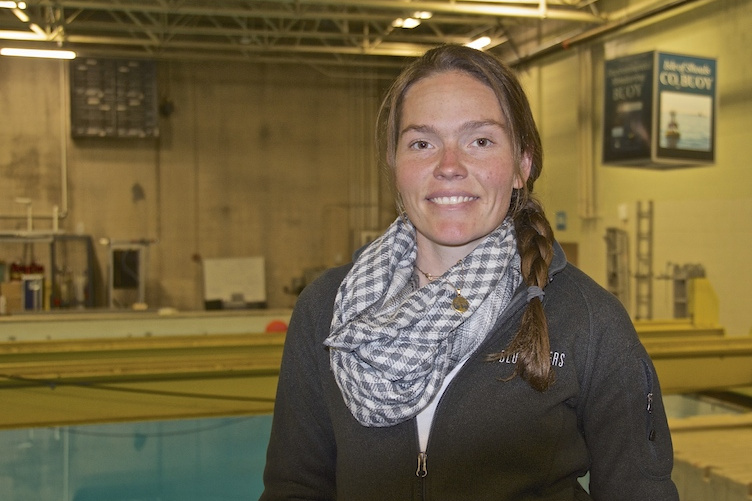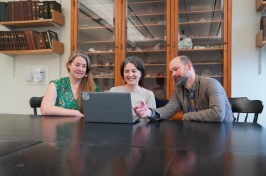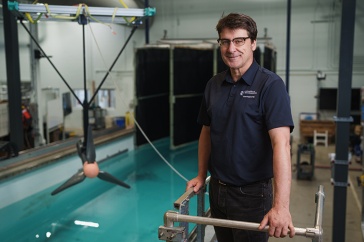
Salme Cook, an oceanography Ph.D. student, has received a fellowship granting her access to one of the fastest computers in the world.
To know how sediment moves in an estuary, you have to know how the water flows — the tides, the currents. Using computer models to understand that motion can be time-consuming and costly. Which is why Salme Cook, an oceanography Ph.D. student in the UNH School of Marine Science and Ocean Engineering, considers it a gift to have received a Blue Waters graduate fellowship granting her access to one of the fastest computers in the world.
Cook is one of only 10 people in the country this year to have received the fellowship that comes with a $38,000 stipend, up to $12,000 toward tuition and up to 50,000 unit hours on the powerful Blue Waters computing system, whose speed equates to a thousand trillion operations per second, making massive computational projects possible. At peak speed it is almost 3 million times faster than the average laptop.
"Blue Waters wasn’t designed to be the fastest, it was designed to answer big questions.”
“The number isn't as important as the fact that we are given space on the machine,” Cook says. “This will make a big difference to my research. Blue Waters wasn’t designed to be the fastest, it was designed to answer big questions.”
Cook’s questions stem in part from her work in the Great Bay estuary, New Hampshire’s largest, where she is looking at bed shear stress (the way currents transfer energy to the estuary bed) and nutrient fluctuations from the sediment. A next step is to create a map with very fine resolution and detail to better understand those influences. To do so demands a powerful computer like Blue Waters.
“It’s not going to solve all the problems, but it’s a tremendous resource,” she says of the supercomputer. “I’m at a point where the model is running really well, but we need higher resolution, which demands higher computational resources.”
Computer numerical models can provide answers to questions that otherwise might not be known. The simulations help her understand the structure of tides in estuarine environments like Great Bay, particularly the transition from deep tidal channels onto large mudflats or salt marshes.
“The tides are very strong in the Gulf of Maine; in the Piscataqua River, in particular, the currents can be as fast as 2 meters per second and the tides can vary by as much as 2 meters depending on the time of the month. That’s moving things in a very different way,” Cook says.
Researchers across the country use the power of Blue Waters to tackle a wide range of challenging problems, from astronomy to molecular dynamics. Support for the supercomputer comes from the National Science Foundation and the University of Illinois. The graduate fellowship program, now in its fourth year, makes awards to outstanding Ph.D. students who are incorporating high performance computing and data analysis into their research.
“My goal is to help answer scientific questions that will eventually aid local government in setting policies, developing strategies and solving societal issues,” Cook says. “Supercomputers and numerical models are powerful tools, and access to Blue Waters and the support they supply will be invaluable to solving some of the problems that still exist in estuaries like the Great Bay.”
Interested in marine study? Explore the options at the UNH School of Marine Science and Ocean Engineering.
-
Written By:
Jody Record ’95 | Communications and Public Affairs | jody.record@unh.edu























































